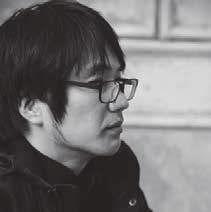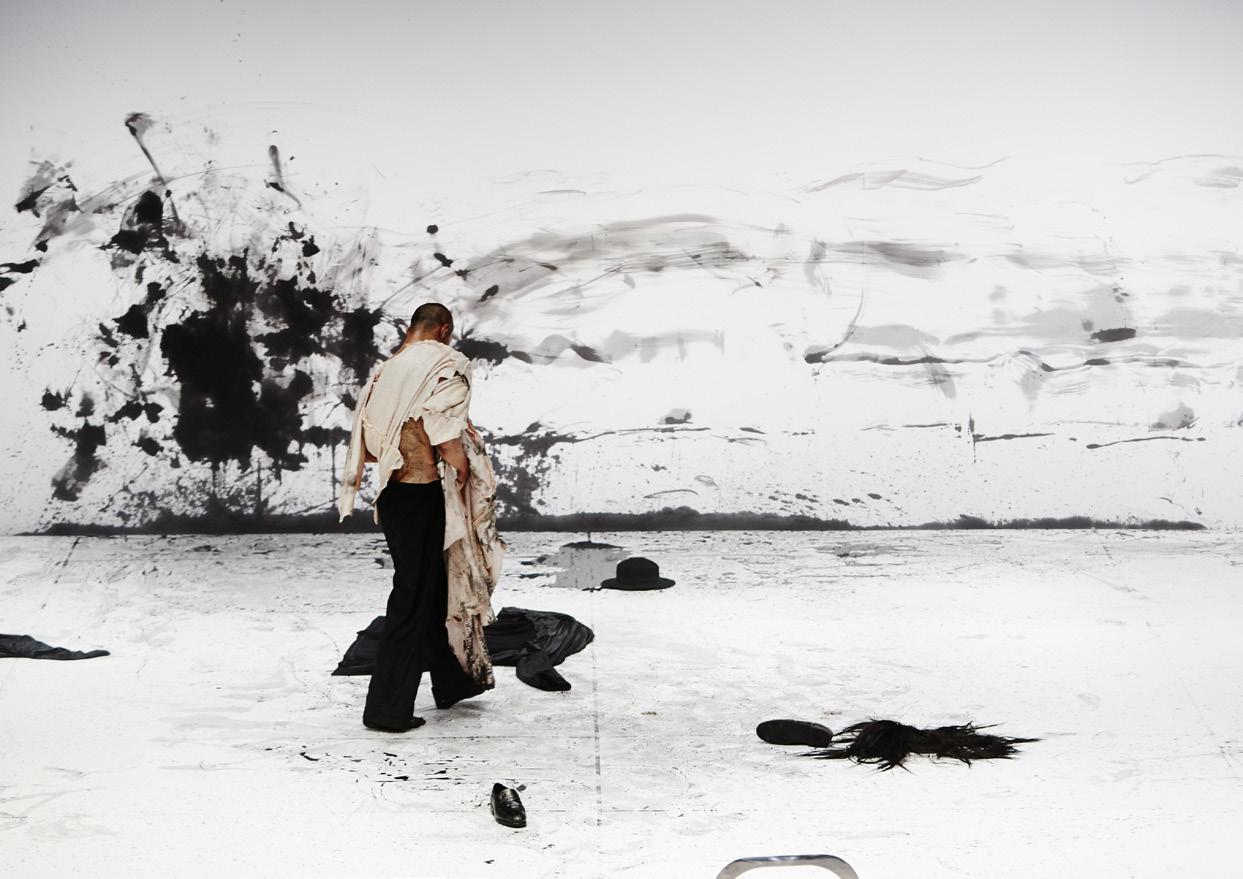Performance Info
Zuck-geuk (Director. dappertutto studio.)
: Theatre that exists in order to be one’s own audience
The name of your team is very original. It is also used as the title for your works. What is the meaning?
I added the word ‘studio’ to Meyerhold’s stage name ‘Dr. Dappertutto.’ ‘Dappertutto’ is the Italian term that means constantly streaming, anywhere. I strive to find a way to bring my generation to the theatre as opposed to sticking to the traditional guidelines - streaming constantly, anywhere.
You have a unique style, so much that it is not possible to think of anyone who is doing something similar.
In the beginning my work was drama-focused. However, I started to feel that was not valid anymore. I like the academic who constantly does research but I’m not sure about the educated who repeat the same thing. Directors have this within them. That is why I intentionally omitted the role of the playwright and contemplated the theme of ‘this generation.’ The same goes for the issue that the director often has a disproportionate amount of power. I intentionally avoided falling into these traps and am also naturally aware of the benefits of team play.
In the beginning your work was mainly based in festivals and street performance. Tell us about the work that went into these productions.
I start from going to the city in which the performance is scheduled and talking to the people there to get site recommendations. I document the interviews of people and give them a one-minute time limit. And then the team visits the site and does a performance for one minute. It is a performance that is based on what is interesting about a stranger’s perception, a type of improvisational theatre of situations. I made these into a series of one-minute-long clips and made it so that the audience can access them through a QR code. Thus far, we have: dappertutto studio, dappertutto Itaewon, dappertutto Taereung National Training Center, dappertutto Shanghai, Collected Stories by Chekhov, dappertutto Busan, dappertutto Ansan, dappertutto Goyang, dappertutto Seoul and dappertutto APAP Tour.
You produced parade performances in sites that have historical and cultural meaning such as the DMZ , Danginri, and Daehakro. What is the meaning of these parades?
If the former is related to the theme of ‘place’ then the latter represents the issues that are contemplated on by dappertutto studio, concerning the direction we would like to take. After conducting a workshop with the collaborating artist of the moment, the work consists of going to any site and individually working at the site. So each artist gets to showcase his unique performance within the context of one parade. At the same time, I wanted to find a way to keep even the people’s stories unfiltered. To each individual, his own vision will be the priority but it is the people who will watch the performance after all. The idea of being site-specific is important but so is coincidence. The performance can only take place when contradictions coexist.
You seem to have a lot of interest in the history of theatre.
Pursuing contemporary theatre, you get to wonder and get confused if this is the right way and all. Then you need some time to stop for a while and weigh up the coordinate of your theatre within theatre history. I came to want to explain my work as part of the extension of ‘Sinpa,’ as a sacred form of popular theatre, and ‘primal musical theatre,’ as a language before language. A new theatre is an outcome of looking at the origin of theatre through the eyes of contemporary era, and theatricality is naturally hidden in branched genres.
How was Avant-garde Sinpa-guek, which was performed at Namsan Arts conceptualized?
When I first decided to deal with ‘Sinpa,’ I thought that I needed to approach it through something that predates it. The genre that predated ‘Sinpa’ would be Kabuki , which is a genre that was targeted exclusively towards commoners. It was almost an ‘admirably low brow genre’ that took pretty much anything if they considered it to be liked by the public with no structure or standards. Afterwards, Kabuki became structured as a traditional art as its popularity rose and that is when the ‘Sinpa’ was introduced. If you think about it, it wasn’t that ‘Sinpa’ followed the structure of Kabuki because it had to but was striving to get to the core of what was lost in Kabuki over time. The very lack of structure and rules and the attitude that accepts change at any given moment were the fundamental energies that allowed ‘Sinpa’ to arise.
You have a motto that goes, making a production until ‘everyone becomes their own audience.’
There’s a practical field of study called ‘Myongli,’ which is based on Eastern philosophy. It argues that every human being is born with 8 characters, which is connected to my argument about ‘everyone’s own play.’ That is, a stage not dominated by theatre artist, but one that assumes itself as a manual to be discarded in order for the life in which the audience goes deeper with their own storytelling. I think it deserves to be presented as Eastern poetics.
What about the process with the actors? Sometimes you require independent actors and more recently you produced a play with no actors.
It can be explained through classical music and jazz. I need field holders(actors) that are capable of improvising bebop. Not someone who will play exactly what is written in the music. In that sense I need the ‘independent actor.’ I believe that each actor has his own method that works best for him. I am currently conceiving a piece called Genesis that involves the architectural space of a black box that interacts with the set.
What do you think the director’s role is?
The active observer. The director collects the spectacles where the ‘presence’ from the actors is sensed. Then they are rearranged temporally and spatially so that he or she can witness the spectacle branching and integrating on its own. During that process a variety of concepts come to coexist, from which the audience chooses and amplifies some on their own and connects to their own ideas.
* 1st Photo : dappertutto studio
* Photo "Avant-garde Simpa-guek" copyright : Namsan Arts Center
Production Details
- Director
Zuck-geuk
Reference
- E-mailzuckgeuk@gmail.com









.jpg)
.jpg)

 PREV
PREV
.jpeg)
.jpg)
_(c)포스(FORCE).jpg)
_(c)장석현_코끼리들이 웃는다(SUKHYUN JANG_ELEPHANTS LAUGH).jpg)
.jpg)
.jpg)
_(c)한받(Hahn Vad).jpg)
_(c)비주얼씨어터 꽃(CCOT)(1).jpg)
_(c)봉앤줄 (BONGnJOULE)(1).jpg)
_(c)대한민국연극제 2019 (Korea Theater Festival 2019)(0).jpg)
_(c)몸꼴(Momggol)(1).jpg)
.png)
2018MODAFE_Taemin Cho (2).jpg)











